This article shares five essential steps to help you master ABA programming for your child's success. It highlights the importance of:
Each step is backed by key concepts, such as:
Together, these elements enhance the effectiveness of ABA interventions tailored to individual needs.
Let’s dive a little deeper! Understanding these principles can feel overwhelming at times, but remember, you’re not alone in this journey. Many parents face similar challenges, and sharing experiences can be incredibly helpful. For instance, positive reinforcement isn’t just a buzzword; it’s a powerful tool that can make a real difference in your child’s learning.
As you explore these steps, think about how you can incorporate them into your daily routine. Consistency at home is key, and it can be as simple as celebrating small victories together. Monitoring progress doesn’t have to be daunting either; it’s about noticing the little changes that show growth.
So, let’s explore this together! By focusing on these essential steps, you’re already on the right path to supporting your child's development. We’re here to help you every step of the way, encouraging you to take action and seek out resources that resonate with you and your family.
Understanding the intricacies of Applied Behavior Analysis (ABA) programming can really change the game for parents who want the best for their children. With its evidence-based strategies and proven success rates, ABA provides a structured way to help kids develop essential skills and behaviors. But let’s be honest—navigating the complexities of ABA can leave parents with a lot of questions. How can you effectively implement these strategies at home? What steps are crucial for crafting a personalized treatment plan?
This guide is here to shed light on the five essential steps to mastering ABA programming. Together, we’ll empower you to support your child’s development and success. Let’s explore this journey together!
ABA programming is rooted in the principles of behaviorism, which explores how we learn and change our actions. Let’s dive into some key concepts that can help you understand this better:
By familiarizing yourself with these concepts, you’ll feel more equipped to engage actively in your child’s ABA programming, ultimately fostering their success. And here’s a bonus: our AI-driven progress report automation frees up 50% more time for your child’s treatment, allowing for a more focused and personalized approach to their care. Let’s explore this together!
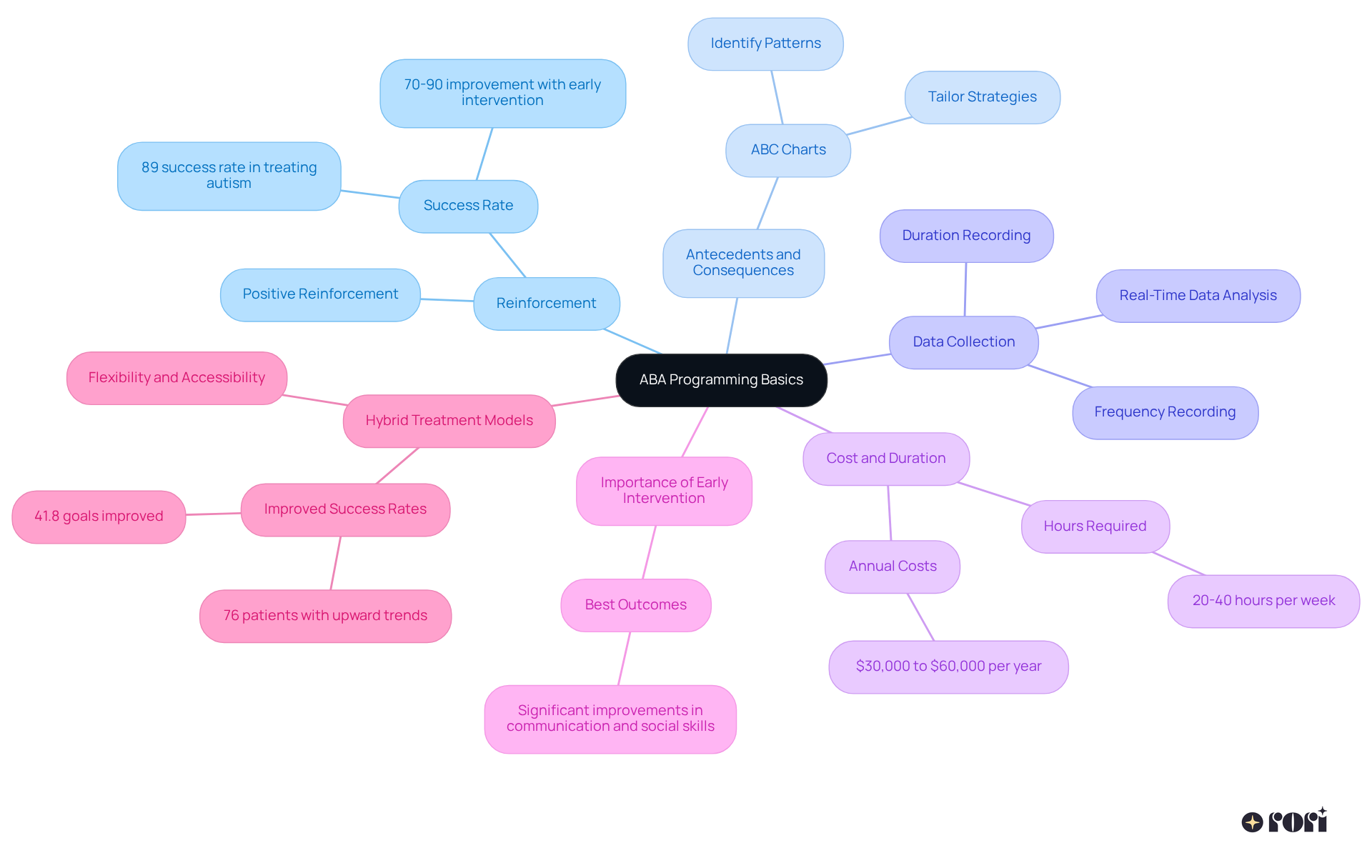
To conduct a comprehensive assessment, let's break it down into a few friendly steps:
Gather Information: Start by collecting data from various sources, like parents, teachers, and therapists. This multi-faceted approach ensures you have a complete understanding of your child's needs and behaviors.
Use Standardized Tools: It's helpful to employ assessments such as the Vineland Adaptive Skills Scales (VABS) and Functional Assessments (FBAs). The VABS is particularly reliable and valid, offering insights into adaptive functioning across different areas. This makes it a valuable resource in autism assessments.
Observe Behavior: Take some time to observe your child in different settings. This direct observation helps you understand their behavior in context and can reveal triggers or patterns that structured assessments might miss.
Identify Goals: After reviewing the assessment results, pinpoint specific goals tailored to your child's unique needs and strengths. By customizing goals, you ensure that the ABA programming treatment plan remains relevant and effective.
This thorough approach lays a solid foundation for creating an effective ABA programming treatment plan, ultimately enhancing your child's development and independence. Remember, we’re here to help you every step of the way!
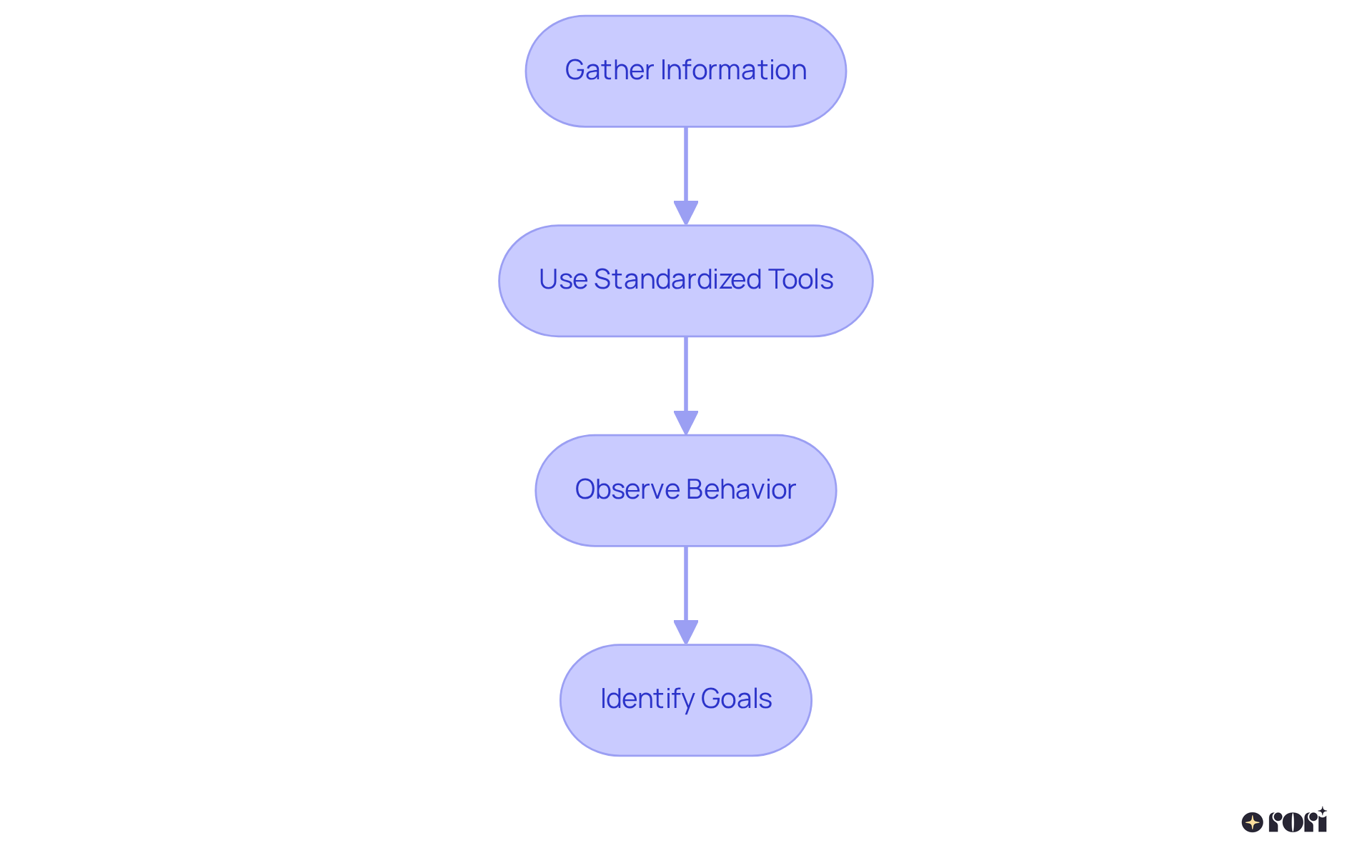
Creating a personalized ABA treatment plan can feel like a big task, but it’s all about taking it step by step. Let’s dive in!
Define Target Behaviors: Start by clearly specifying the behaviors you want to increase or decrease. This is super important because it gives your therapy a focused direction, making it easier to track progress.
Set SMART Goals: Make sure your goals are Specific, Measurable, Achievable, Relevant, and Time-bound. For instance, rather than saying, 'improve communication,' you could aim to 'increase the use of two-word phrases during playtime by 50% within three months.' This way, you have a clear target to work towards!
Select Interventions: Choose evidence-based strategies that fit your student's unique learning style and preferences. Techniques like discrete trial training or natural environment teaching can really make a difference, depending on what your child needs.
Involve the Family: Don’t forget to collaborate with family members! Their involvement is key to making sure the plan works well at home. When families participate, it strengthens the skills learned during therapy and helps those skills transfer to different environments.
This customized approach really boosts the effectiveness of your student's ABA programming techniques, ensuring that the interventions are tailored to their individual needs and situations. Remember, we’re here to help you every step of the way as you navigate this journey together!
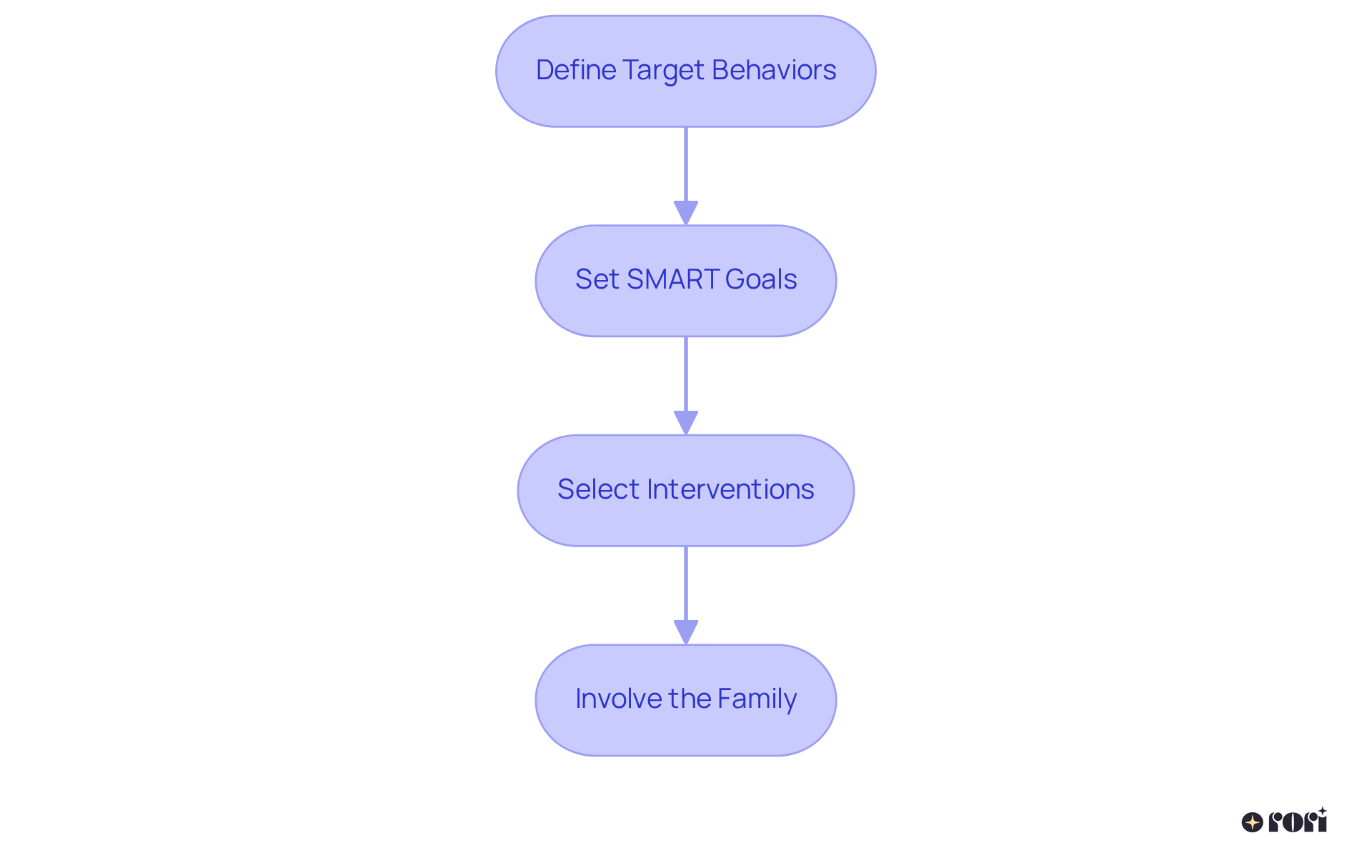
To effectively implement ABA strategies at home, let’s consider a few friendly steps:
Establish Routines: Developing structured daily routines can make a world of difference! By incorporating specific times for practicing skills, you help your child feel secure and at ease. This stability is essential for their progress in treatment.
Use Visual Supports: Think about integrating visual schedules and prompts, like picture charts, to clarify expectations for your child. These tools not only help in understanding daily activities but also boost engagement and adherence, leading to better outcomes in ABA programming.
Practice Positive Reinforcement: Implementing a rewards system for demonstrating desired behaviors is key! Positive reinforcement encourages repetition and solidifies learning, making it a cornerstone of effective ABA strategies.
Communicate with Counselors: Keeping in touch with your child’s counselor is vital. Regular discussions about progress ensure that strategies are aligned between home and session activities. This collaboration helps maintain consistency, which is so important for achieving positive outcomes in ABA therapy.
By prioritizing these strategies, you’ll be assisting your child in developing their skills and achieving greater success in their ABA programming. Remember, consistency in routines and the use of visual supports are key factors that contribute to effective learning and behavioral development in individuals with ASD. Let’s explore this together!
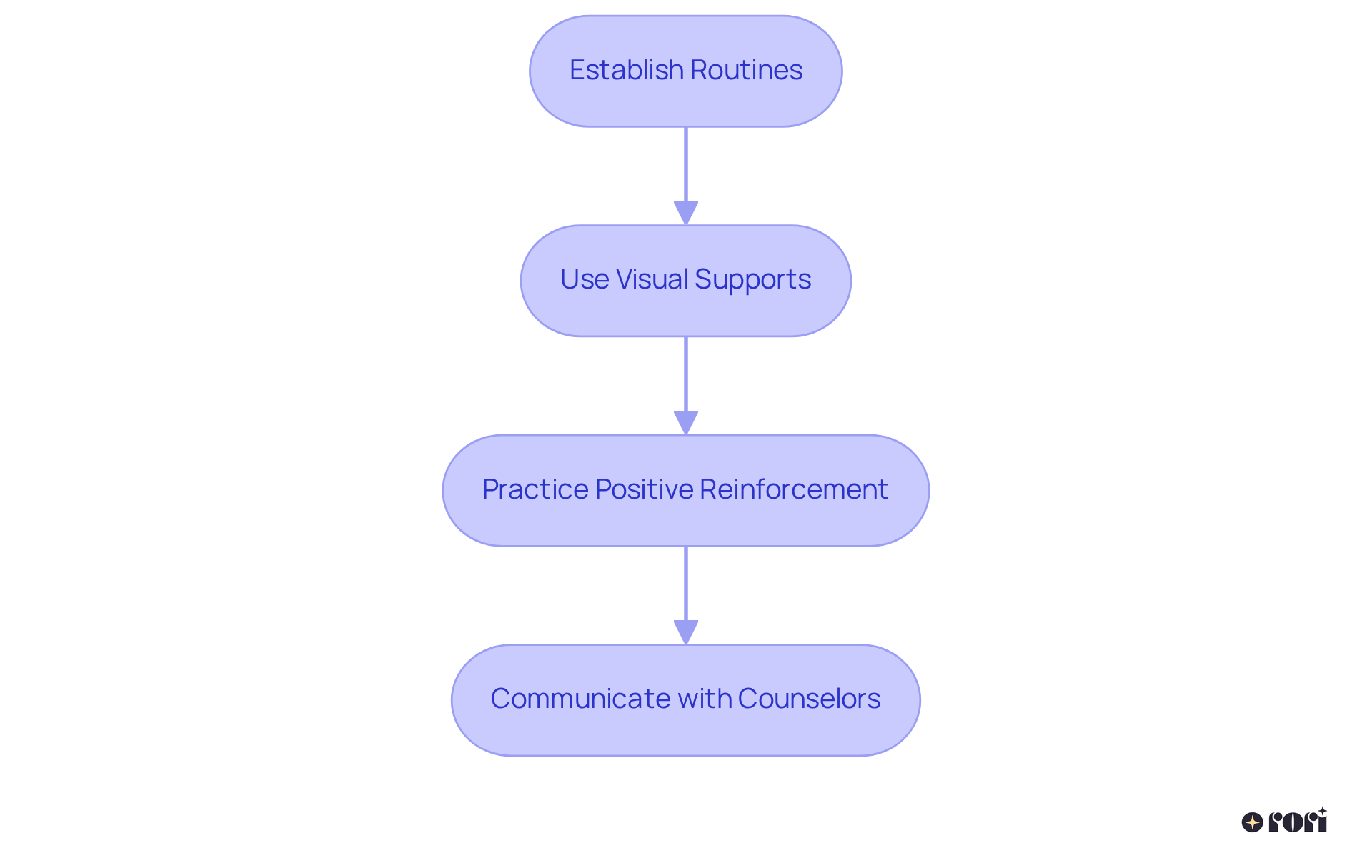
To effectively monitor progress and adjust your child's ABA therapy plan, let’s consider a few friendly steps:
Collect Data Regularly: Start by implementing systematic data collection methods like frequency counts or duration recording. This helps you track your child's progress on specific goals. Objective data is crucial for understanding behavior patterns and measuring improvements over time. With Rori Care’s innovative AI technology, data collection becomes automated, making tracking and prebuilding progress reports a breeze! This means you can spend 50% more time focused on your child's unique needs. Plus, visual data representation, like graphs, really helps in analyzing and presenting this information effectively.
Review Goals Periodically: It’s important to regularly check in on whether your child is achieving their goals. If progress stalls or new challenges pop up, be ready to adjust these goals to better fit their developmental needs. Sometimes, data can reveal underlying issues affecting behavior, like hunger or fatigue, that might need addressing. The insights from automatic progress reports can guide these evaluations, ensuring that the treatment plan is always responsive to your current situation.
Communicate with the Team: Keep those lines of communication open with your child’s therapy team! Scheduling regular meetings—ideally every six months—can be a great way to discuss progress, share insights, and collaboratively decide on any necessary adjustments to the treatment plan. Engaging actively with the team empowers you as a caregiver and enhances your ability to support your child's behavioral goals effectively.
Be Flexible: As your child grows, their needs may change. Staying adaptable and ready to modify the treatment plan is key to ensuring it remains effective and responsive to their evolving requirements. The patient-centered approach of ABA means that modifications are not just expected but encouraged to foster ongoing growth and development.
By actively engaging in these practices, you can ensure that your child's ABA programming is not only effective but also tailored to their unique journey. Together, we can foster continuous growth and development! Let’s explore this together!
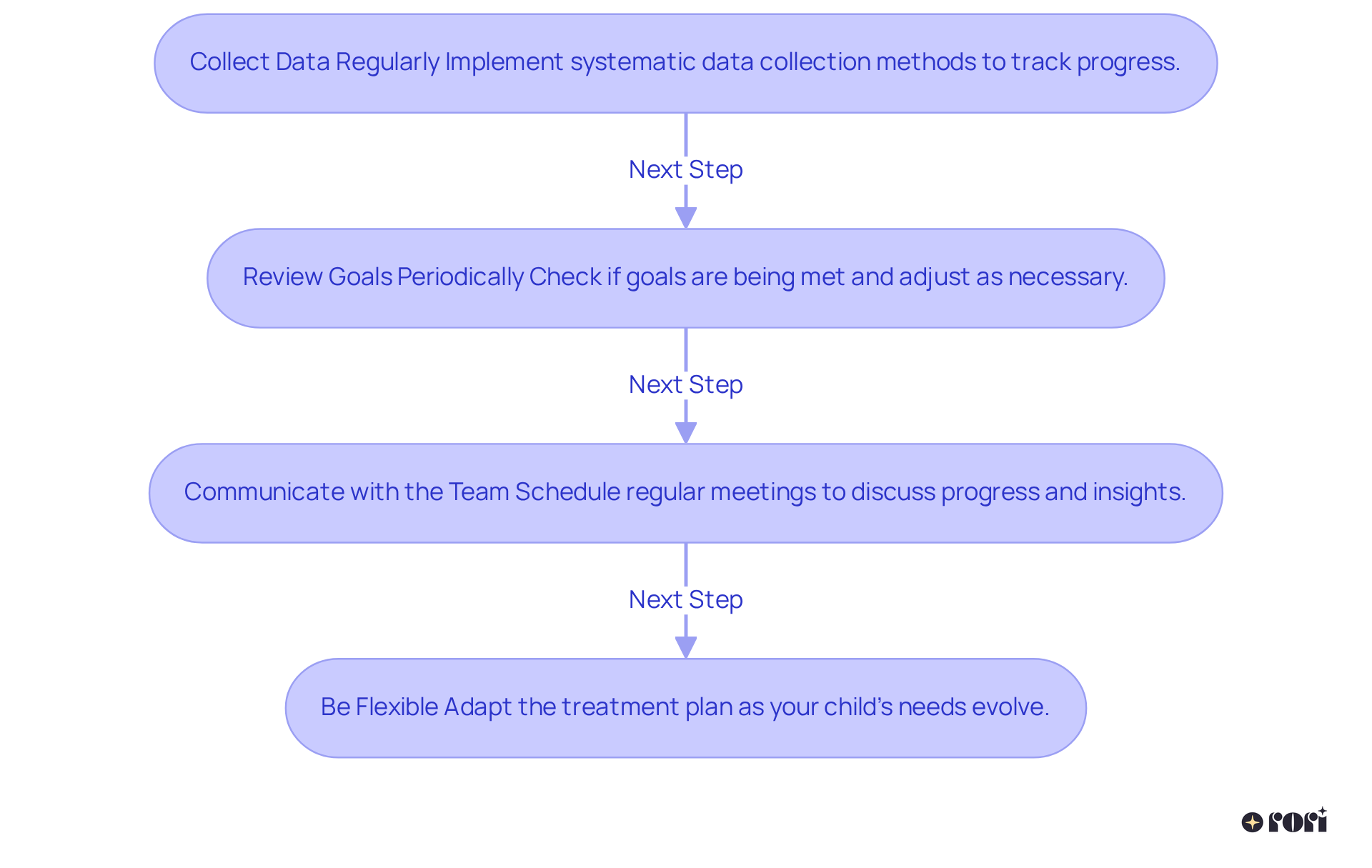
Understanding and mastering ABA programming is essential for fostering success in children, especially those with autism spectrum disorder. By grasping the fundamental concepts of ABA and creating personalized treatment plans, you can significantly enhance your child's developmental journey. This guide empowers families to implement effective strategies consistently at home, ensuring that children receive the support they need to thrive.
Key insights include:
Ultimately, mastering ABA programming is not just about applying techniques; it’s about creating an environment where children can flourish. By actively participating in your child's ABA programming and embracing these practices, you can make a profound difference in their life. So, take these steps to heart, and let’s embark on this rewarding journey toward your child's success together!
What is ABA programming?
ABA programming, or Applied Behavior Analysis, is based on behaviorism principles and focuses on understanding how we learn and change our actions. It employs strategies like reinforcement to encourage desired behaviors.
How does positive reinforcement work in ABA therapy?
Positive reinforcement encourages desired behaviors by offering rewards. Research shows that 70-90% of individuals with autism experience significant improvement with early and intensive ABA interventions.
What are antecedents and consequences in ABA?
Antecedents are the triggers that lead to specific actions, while consequences are the outcomes that follow those actions. Tools like Antecedent-Behavior-Consequence (ABC) charts help therapists identify these patterns.
Why is data collection important in ABA therapy?
Data collection is vital for assessing progress in ABA therapy. It involves tracking behaviors through methods like frequency and duration recording, allowing therapists to refine treatment plans based on real-time data.
What is the typical cost and duration of ABA treatment?
ABA treatment typically requires a commitment of 20-40 hours per week over several months or years, with costs ranging from $30,000 to $60,000 annually.
Why is early intervention important in ABA therapy?
Early intervention is linked to the best outcomes in ABA therapy. Parents are encouraged to seek support as soon as possible to give their child the best chance for success.
What are hybrid ABA treatment models?
Hybrid ABA treatment models combine various approaches and have shown improved success rates, offering families more flexible and effective options for treatment.
How can I conduct a comprehensive assessment of my child?
A comprehensive assessment involves gathering information from various sources, using standardized tools like the Vineland Adaptive Skills Scales (VABS) and Functional Assessments (FBAs), observing behavior in different settings, and identifying specific goals tailored to your child's needs.
What role does observation play in assessing my child?
Observing your child in different settings helps understand their behavior in context, revealing triggers or patterns that structured assessments might miss.
How can I ensure the ABA programming treatment plan is effective?
After reviewing assessment results, it's important to pinpoint specific goals tailored to your child's unique needs and strengths, ensuring the treatment plan remains relevant and effective.